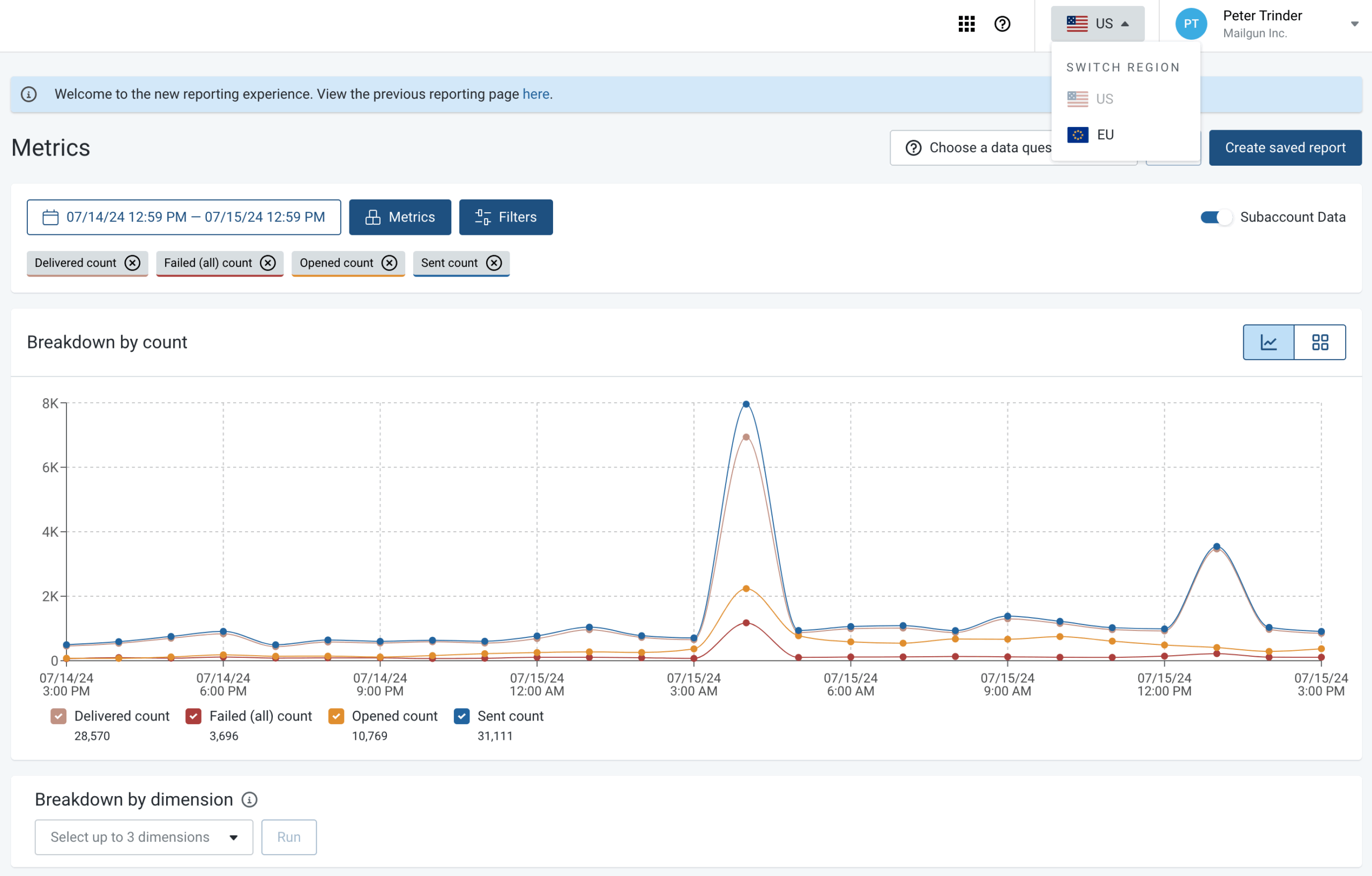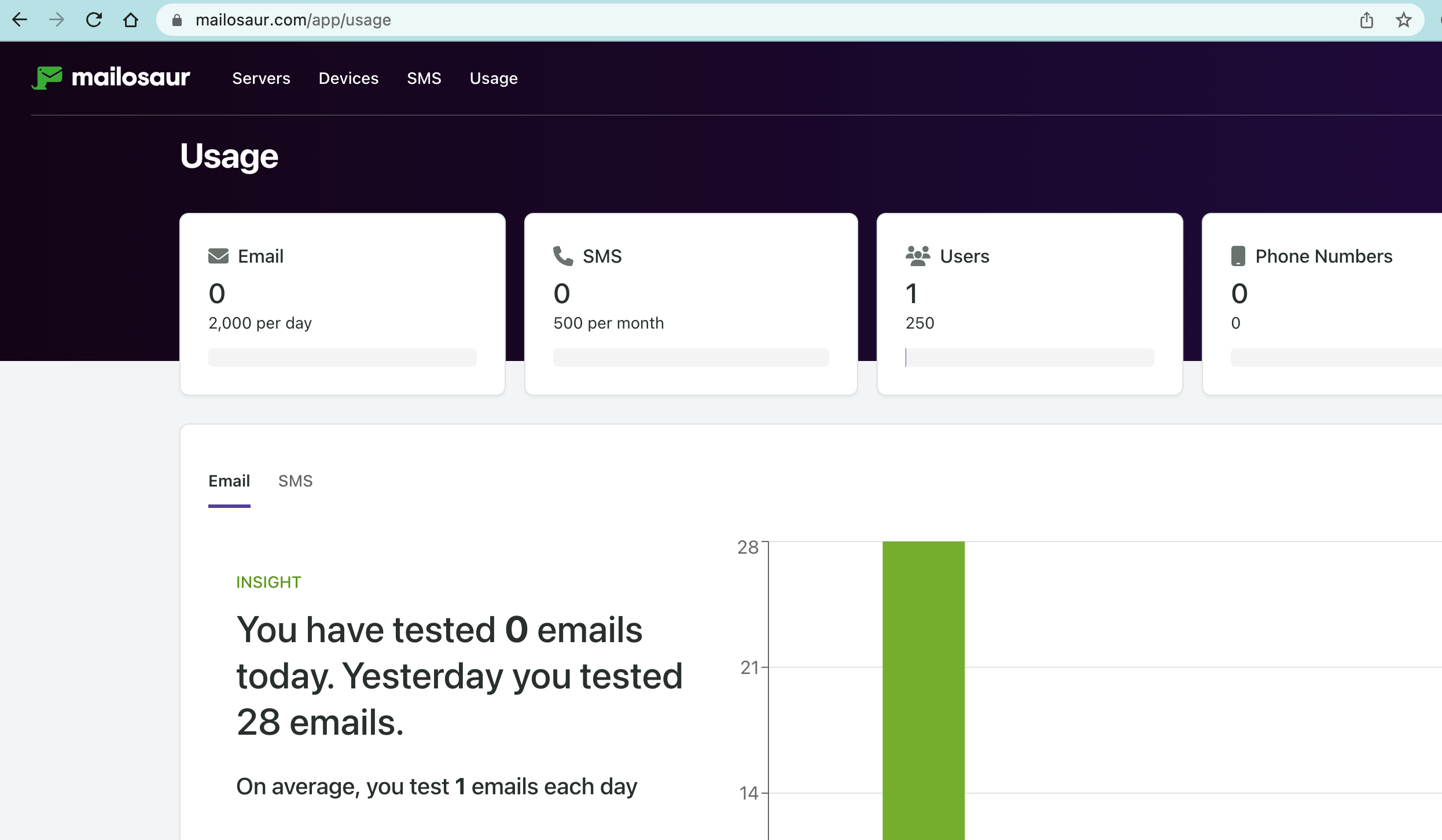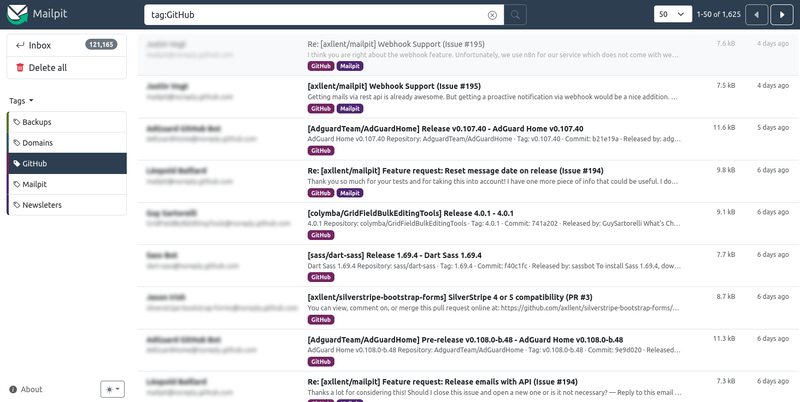Mailtrap is a trusted tool for testing emails in development environments, but it’s not designed for large-scale delivery or real-world sending. In my experience, many teams eventually need more — higher volume limits, live sending options, and integrated analytics. That’s where Mailtrap alternatives come in.
Whether you’re a developer looking for API-based email delivery, a marketer wanting to test and send campaigns, or a QA engineer automating email workflows, there are better-suited email marketing tools available today.
In this guide, I’ll share the 8 best Mailtrap alternatives in 2025 — from free, open-source tools to full-featured email delivery platform options.
Why I Recommend Considering Mailtrap Alternatives
While Mailtrap is a reliable sandbox for testing emails, it’s limited when you move beyond basic simulations. Many teams outgrow its volume limits, lack of live sending, and restricted integrations, turning instead to platforms that combine testing with real deliverability rates, email automation, and flexible pricing.
Pricing Concerns
Mailtrap’s pricing scales quickly — $123/month for just 10K emails and higher overage costs can make continuous testing expensive. As one G2 user noted, “It gets pricey once you move beyond basic use.” Often teams handling large QA workloads or frequent transactional tests find better value elsewhere, especially when they need bulk emails capabilities.
Feature Limitations
While Mailtrap covers basic testing, it lacks features like self-hosting, email design tools, and deliverability tests. Lower tiers also restrict log retention to 5–15 days, which limits debugging for long test cycles.
Email Sending Capabilities
Mailtrap isn’t built for production email sending. Even its API and SMTP options are designed for testing environments, not live transactional campaigns. Teams that outgrow sandbox-only workflows often migrate to platforms like Sender or Mailgun to gain higher deliverability, dedicated IPs, and full authentication control.
Testing Volume Requirements
Mailtrap enforces strict sending limits—reaching them triggers an error. I’ve seen QA teams scaling continuous integration or automated testing pipelines hit these caps, prompting them to explore unlimited-volume tools.
Deployment and Hosting Preferences
Mailtrap operates exclusively in the cloud, with no on-premise or containerized version. Organizations prioritizing data sovereignty or needing local testing environments often turn to open-source or self-hostable options such as MailHog or Mailpit for greater flexibility and compliance control.
Mailtrap Competitors — A Quick Comparison Table
Before diving into individual reviews, here’s a side-by-side look at the top Mailtrap competitors I’ve evaluated:
| Platform | Best For | Stand Out For | Pricing |
| Sender | Businesses and developers needing testing + real email delivery | Generous Free Forever plan (15,000 emails/month) and built-in automation | Free for 2,500 subscribers; paid plans from $8/month |
| Mailgun | Developers handling high-volume transactional emails | Robust API infrastructure, validation, and deliverability tools | Free 30-day trial (5,000 emails); paid plans from $15/month |
| SendGrid | Growing businesses needing scalable email delivery | Advanced analytics, webhooks, and strong developer support | Free (100 emails/day); paid plans from $19.95/month |
| Postmark | Teams prioritizing reliability and deliverability | Lightning-fast transactional sending with transparent logs | Free trial; paid plans start at $15/month (10K emails) |
| Mailosaur | QA engineers automating email/SMS testing | Deep automation and CI/CD integrations | 14-day free trial; paid plans start at $9/month |
| SMTPget | Developers testing SMTP and spam performance | Simple relay simulation and affordable sandbox testing | Free plan available; paid from $10/month |
| Mailpit | Developers needing a free, private testing setup | Open-source, self-hosted with no limits | Completely free |
| AWS SES | Enterprises sending high-volume transactional emails | Scalable, low-cost infrastructure and strong deliverability | Pay-as-you-go (~$0.10 per 1,000 emails) |
8 Best Mailtrap Alternatives I’ve Reviewed
Below, you’ll find overviews of the best Mailtrap alternatives in 2025 — from developer-centric tools like Mailgun and Postmark to all-in-one solutions like Sender.
1. Sender – Best Mailtrap Free Alternative
Sender offers a complete email delivery platform—including SMTP relay, API, and real-time deliverability tracking—while also letting you send production-ready campaigns directly.
The Free Forever plan supports up to 2,500 subscribers and 15,000 emails/month, making it far more generous than Mailtrap’s limited sandbox. Unlike Mailtrap, Sender combines testing, automation, and analytics in one dashboard, giving developers and marketers a unified space to test, send, and monitor emails without switching tools.
With responsive templates, spam score checks, and sender reputation monitoring, it’s ideal for teams wanting both email testing and real-world delivery performance, ensuring messages avoid the spam folder—something Mailtrap doesn’t natively provide.

Key Features
- SMTP & email API. Send and test transactional email services through a reliable, developer-friendly infrastructure with detailed delivery tracking via Sender API.
- Deliverability & spam checks. Built-in tests analyze spam score, domain reputation, and authentication settings for optimal inbox placement.
- Responsive email previews. Instantly preview emails across devices and clients to ensure consistent rendering before sending.
- Generous free plan. Test and send up to 15,000 emails monthly for free, with the ability to create templates — far beyond Mailtrap’s limited sandbox capacity.
Pros & Cons
Pros:
- Generous free plan
- Unified platform
- Excellent deliverability
Cons:
- Limited advanced API logs
- No self-hosting
- Sender branding in free plan
Pricing
Sender offers one of the most generous free tier options available — up to 2,500 subscribers and 15,000 emails per month, free forever. Paid plans start at around $8/month, unlocking higher sending volume, automation, and advanced segmentation tools through the API.
Unlike Mailtrap, Sender’s free plan isn’t just for sandbox testing; it supports real email delivery, including transactional email and marketing campaigns. There are no hidden overage fees, and pricing plans scale transparently based on subscriber count and monthly email volume.
2. Mailgun – Reliable Email Infrastructure
Mailgun is a developer-first email infrastructure platform with advanced SMTP, RESTful APIs, and email validation services.
Mailgun’s built for high-volume email transactional use and includes deliverability issues monitoring, dedicated IPs, and routing controls. Compared to Mailtrap, Mailgun doesn’t stop at testing—emails actually reach inboxes, allowing teams to test at scale and send production traffic confidently.
Its Inbox Placement Tests and API logging make it a strong choice for developers who’ve outgrown sandbox-only testing environments and work with various programming languages.

Key Features
- Powerful email API. RESTful API supports high-volume transactional sending with precise control over routing and authentication.
- Email validation tool. Detect invalid or risky addresses to maintain healthy sender reputation and minimize bounce rates.
- Deliverability suite. Monitor inbox placement, IP reputation, and engagement metrics in real time.
- Dedicated IPs & warm-up. Gradually build domain reputation with automated IP warm-up for consistent delivery performance.
Pros & Cons
Pros:
- Enterprise-grade infrastructure
- Powerful API ecosystem
- Excellent deliverability tools
Cons:
- Pricing scales quickly
- Complex setup for beginners
- Limited marketing features compared to other services
Pricing
Mailgun offers a limited Free Trial (100 emails/day for one month), then shifts to a pay-as-you-go model starting at $15/month for 50,000 emails. Additional features such as dedicated IPs, email validation, and deliverability monitoring come as paid add-ons. Costs scale with sending volume and frequency, which can grow quickly for larger workloads.
Compared to Mailtrap, Mailgun’s plans are more flexible for teams needing production delivery, but less budget-friendly for small-scale testing or QA use. The transparent per-thousand pricing structure, however, makes it predictable for developers who manage large, automated transactional email systems and need to seamlessly integrate with existing workflows.
3. SendGrid – Scalable Email Service
SendGrid provides end-to-end email delivery platform capabilities, combining testing, APIs, and production sending under one roof.
With built-in spam score testing, template editors, and webhooks for event tracking, it outperforms Mailtrap in scalability and data insight. While Mailtrap focuses on simulation, SendGrid enables real email deliverability testing, helping teams analyze performance in real inboxes.
It’s trusted by large senders and supports dynamic templates and A/B testing, making it ideal for growing businesses and medium sized businesses evolving from testing to large-scale sending, offering both marketing and transactionalcapabilities.

Key Features
- Comprehensive email API. Integrate easily with any app to send email marketing or transactional emails at scale.
- Template editor. Drag-and-drop editor with reusable email templates for quick deployment.
- Event webhooks. Track opens, clicks, bounces, and spam complaints programmatically for analytics-driven optimization.
- A/B testing tools. Test subject lines and content variations to improve engagement and deliverability rates.
Pros & Cons
Pros:
- Highly reliable infrastructure
- Advanced analytics
- Great developer support
Cons:
- Support tiers are paid
- Template editor can lag
- Deliverability requires fine-tuning to track email performance
Pricing
SendGrid provides a Free Tier for up to 100 emails/day for 60 days, ideal for small-scale testing. Paid “Essentials” plans start at $19.95/month for 50,000 emails, while the “Pro” plan begins at $89.95/month and includes dedicated IPs and advanced analytics. Enterprise pricing is customized with multiple pricing tiers available.
While SendGrid’s costs rise with volume, it includes full email API access, event tracking, and webhooks across all tiers. Compared to Mailtrap, which focuses on testing, SendGrid delivers real inbox performance and scaling potential, making it a logical upgrade for teams ready to move from sandbox environments to high-volume senders production email delivery.
4. Postmark – Excellent Email Deliverability
Postmark is known for its exceptional deliverability rates, offering detailed message tracking, bounce reports, and DMARC alignment—key metrics Mailtrap lacks.
Postmark is purpose-built for transactional emails, ensuring lightning-fast delivery and transparent reporting with fast support and responsive customer support. While Mailtrap limits you to sandbox tests, Postmark lets you test and send in live conditions, helping ensure real-world reliability.
Developers appreciate its intuitive API, message streams, and activity timeline, which simplify monitoring across environments.

Key Features
- Instant transactional delivery. Sends critical emails (password resets, receipts) in under a second with proven reliability.
- Message streams. Separate transactional and broadcast emails for cleaner analytics and reputation control.
- Detailed activity logs. Full visibility into each message’s lifecycle: delivery, open, click, and bounce events.
- DMARC & DKIM alignment. Built-in authentication ensures trusted delivery across major ISPs and inboxes.
Pros & Cons
Pros:
- Outstanding reputation
- Transparent reporting
- Clean API design
Cons:
- Higher base pricing
- Transactional-only focus
- Limited testing tools
Pricing
Postmark’s pricing starts at $15/month for 10,000 emails, scaling up to $245/month for 300,000 emails. Additional messages are billed at a flat per-thousand rate, and all plans include full API access, tracking, and real-time analytics. There’s no permanent free plan, but you can test via its sandbox domain.
While more expensive than Mailtrap, Postmark’s pricing reflects its focus on reliability and speed, offering consistently fast transactional delivery.
5. Mailosaur – Automated Email Testing Platform
Mailosaur focuses entirely on automated email testing tool capabilities, providing virtual inboxes, API-based test automation, and screenshot capture for design verification.
Mailosaur integrates with tools like Playwright, Cypress, and Selenium, letting QA teams automate end-to-end tests. Compared to Mailtrap, Mailosaur provides deeper testing tools intelligence—you can validate email content, links, and subject lines programmatically. It’s ideal for QA engineers needing more than static previews or manual checks.

Key Features
- Automated testing API. Validate email content, subject lines, and attachments directly in your QA pipeline.
- Virtual inboxes. Generate unlimited inboxes for capturing test emails from multiple environments or staging servers.
- Visual previews. Capture screenshots of emails across devices and clients to confirm responsive design accuracy.
- Testing integrations. Works seamlessly with Selenium, Cypress, and Playwright for automated end-to-end testing.
Pros & Cons
Pros:
- QA-friendly automation
- Detailed content validation
- Supports SMS testing
Cons:
- No free plan
- Email sending not supported
- Limited integrations outside QA tools
Pricing
Mailosaur offers no free plan (just a 14-day free trial), but pricing starts at $9/month, providing 5 test inboxes and 50 test emails daily (upgradable to 1,000 daily tests). Higher tiers expand inbox count, message history, and parallel test limits. Enterprise plans include dedicated environments and custom retention policies.
Unlike Mailtrap, Mailosaur is focused purely on automated email testing, not sending, making its pricing geared toward QA teams running continuous integration pipelines.
While more expensive for basic sandbox use, it delivers deeper automation capabilities, integration with CI/CD workflows, and access to testing APIs that justify the cost for development-heavy organizations.
6. SMTPget – Simple Email Testing Tool
SMTPget is a lightweight SMTP testing and email validation service built for developers who need simplicity.
SMTPget offers SMTP relay simulation, spam score evaluation, and email header analysis—mirroring Mailtrap’s sandbox purpose but with fewer restrictions.
Unlike Mailtrap, it doesn’t cap emails per month as tightly and offers straightforward integration for API or manual testing. It’s a practical pick for startups or freelancers needing basic, affordable email testing without advanced infrastructure costs, especially when comparing SMTP providers.
Key Features
- SMTP relay simulator. Test email delivery routes without sending real messages to external recipients.
- Header analyzer. Examine SPF, DKIM, and header data to troubleshoot authentication issues via the mail server.
- Spam score checker. Instantly detect issues that could flag your emails as spam.
- Easy API integration. Connect effortlessly to your existing email systems for manual or automated testing.
Pros & Cons
Pros:
- Straightforward interface
- Flexible API access
- Affordable pricing
Cons:
- Basic feature set
- Limited documentation
- No GUI previews
Pricing
SMTPget offers a free 3-day trial with limited testing credits, followed by paid options starting around $50/month for additional message volume and spam testing features. Custom enterprise pricing is available for high-volume testing or dedicated SMTP relay simulations. The platform keeps pricing straightforward, with no per-thousand surcharges or complex add-ons.
While it lacks Mailtrap’s sophisticated UI, it’s often cheaper for developers who need occasional SMTP simulations or basic deliverability checks. For smaller QA teams and freelancers, SMTPget represents a budget-friendly Mailtrap alternative without recurring overage surprises.
7. Mailpit – Modern Open-Source Email Testing Platform
Mailpit is a powerful open-source Mailtrap best alternative that can be self-hosted locally or in Docker containers.
Mailpit captures SMTP traffic for previewing emails in a web UI—no internet dependency required. Unlike Mailtrap, it offers unlimited inboxes, no message caps, and total data control.
Developers love its instant startup, JSON API, and search/filter options, making it ideal for privacy-conscious teams or CI pipelines that require local environments.

Key Features
- Self-hosted SMTP server. Capture all test emails locally for full privacy and data control.
- Browser-based inbox. View, search, and inspect test messages in a fast, intuitive web interface.
- Unlimited messages. No volume restrictions — ideal for continuous integration and large testing suites.
- Docker & CLI support. Integrates into DevOps pipelines via containerized or command-line setup.
Pros & Cons
Pros:
- Free & self-hosted
- Fast local setup
- Unlimited messages
Cons:
- No cloud option
- Lacks advanced analytics
- Smaller community
Pricing
Mailpit is 100% free and open-source, available for self-hosting or deployment via Docker. There are no paid plans or usage limits, making it ideal for developers seeking a lightweight, private, and cost-free Mailtrap replacement. You can run Mailpit locally or in CI environments with full control over inboxes and data retention.
While it lacks commercial support, the open-source model offers flexibility and zero recurring costs. For teams prioritizing data privacy and offline testing, Mailpit provides everything Mailtrap offers—sandboxing, email previews, and SMTP interception—without subscription fees or API quotas.
8. AWS SES – Cost-Effective for Large-Scale Email Delivery
Amazon Simple Email Service (SES) provides a scalable, pay-as-you-go email delivery platform with one of the industry’s best deliverability reputations.
AWS SES supports SMTP and API sending, dedicated IPs, and domain reputation dashboards. While Mailtrap simulates email delivery, SES offers production-grade sending and testing within real inboxes, often at a fraction of the cost.
It’s perfect for developers managing high sending volumes who need control, scalability, and enterprise-level reliability.

Key Features
- Scalable email sending. Handle millions of transactional or marketing emails through API or SMTP, making it a powerful email marketing service.
- Reputation dashboard. Monitor bounce rates, complaints, and domain health directly from the SES console.
- Configurable authentication. Supports SPF, DKIM, and DMARC for secure, verified sending with advanced features.
- Pay-as-you-go pricing. Flexible pricing structure ideal for startups or enterprises managing variable sending volumes.
Pros & Cons
Pros:
- Extremely scalable
- Lowest per-email cost
- High deliverability
Cons:
- Steep learning curve
- Limited UI tools
- Support isn’t instant
Pricing
AWS Simple Email Service (SES) uses a pay-as-you-go model, charging about $0.10 per 1,000 emails sent and $0.12 per GB of attachments. There’s no setup fee, and if emails are sent from an EC2 instance, the first 62,000 per month are free. Dedicated IPs and deliverability insights come as optional add-ons.
Compared to Mailtrap, AWS SES is significantly more cost-effective for production-grade delivery but lacks a user-friendly interface. Its usage-based model makes it ideal for high-volume senders who value scalability and affordability over simplicity or sandbox convenience.
Email Marketing Platforms Cost Calculator
Compare Mailtrap alternatives side-by-side based on your volume, subscribers, and feature requirements—and discover which complete marketing platform or email service provider offers the best long-term value for your needs.
FAQs
What are the best Mailtrap free alternatives?
The best free alternatives to Mailtrap include Sender, Mailpit, and SMTPget. Sender offers a Free Forever plan with 15,000 monthly email campaigns and real delivery capabilities, while Mailpit provides a self-hosted, open-source testing setup with no limits. SMTPget is another lightweight option for free SMTP and spam testing without complex setup.








